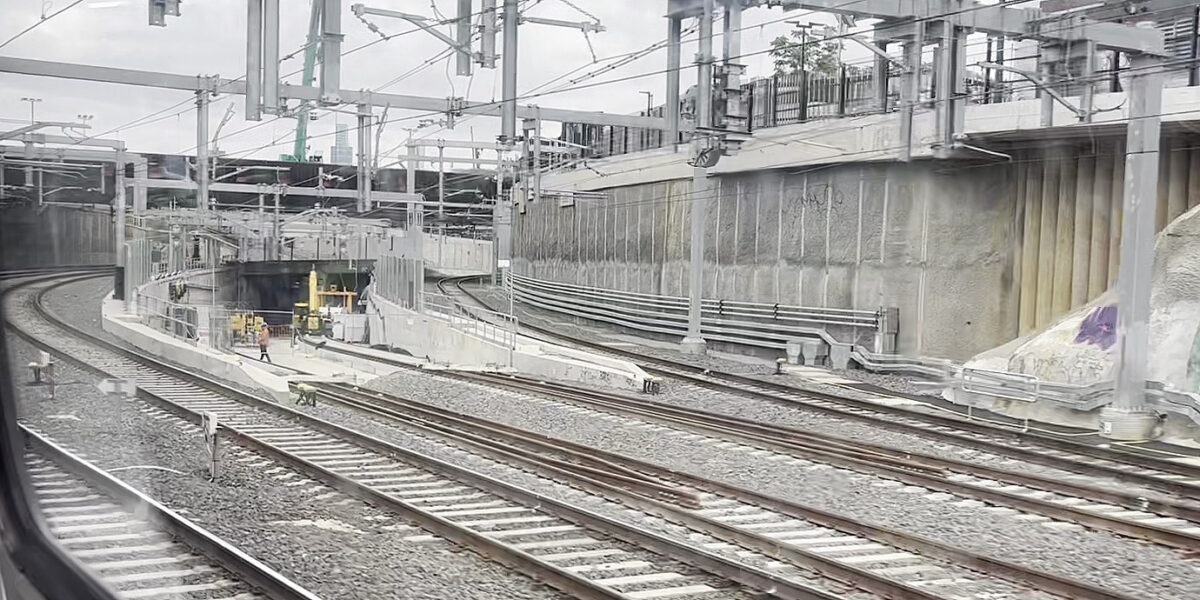A quick one: the Metro tunnel reached a milestone this week when two test trains entered the tunnel.
There was the usual obligatory media release, media event and social media from the government.
I did this on Channel 9 for their 4pm news (but actually recorded at lunchtime).
I was pretty pleased with this interview – apart from initially failing to look straight down the barrel of my iPad!
Later I got feedback from project insiders that they liked it too – in part because it helps explain the route and benefits of the tunnel for those not familiar with it, and it noted the time required for fully testing all the new equipment.
Anyway, the TL;DW key point that I wanted to make: the infrastructure is great. But just as important to make the most of the investment is good services – frequent trains all day every day, and on connecting lines as well.

6 replies on “Metro tunnel reaches a milestone”
… can they get back out again?
My understanding is, none of the stations are yet ready for use.
I guess, their priority shall be, on the Town Hall station, and perhaps the one near Melbourne Central, then, I guess they could open it up, and just run express through the other three until they are finished???
In any case, this is a great milestone for sure.
Felt uncannily like the episode of Utopia from a couple of weeks back in which they tried to deflect from negative commentary by running a train, with much ceremony, just one station on a new line that was still years from completion.
An important milestone, no doubt, but the timing around the negative press of the Comm Games cancellation seems to be more than coincidental.
Unrelated to this article but in the spirt of big transport projects, the REM in Montreal opened this weekend. Much of the success of the project is from the use of elevated rail as opposed to tunnelling, massively driving costs down. We’ve already seen the benefits of elevated rail as part of the LXRP. This got me thinking about how this could be utilised in the SRL to drive down costs and hopefully get us more public transport for the money spent. Why is the government insisting on tunnelling it all when elevated rail could save them so much money?
@Anonymous
The Montreal REM is good as its stations are enclosed structures but our LXRP stations are open air stations. I can see two major reasons for why tunneling was chosen:
– First is that it would be difficult to route an elevated line through the chosen stations as they also have elevated structures.
– Second is that tunneling is cost effective over long distances and my understanding is that its the station boxes that command a high price as well. Looking at areas like Box Hill you’d have to acquire properties to build an elevated station which would be expensive.
That said I do generally agree that there could be an alignment where we have elevated rail instead (maybe going along a median or something similar to some stations on the REM).
One thing I do wonder about the Metro Rail Tunnel is whether the rhetoric about increased capacity is somewhat overblown.
Certainly the lines currently using the Northern Loop City Loop tunnel will benefit, with the Craigieburn and Upfield lines no longer having to share with the Sunbury line.
In terms of the other groups, there is no impact for the Clifton Hill and Burnley loop lines.
As for the Caulfield Loop, the Pakenham/Cranbourne lines already have exclusive use of that around the CBD due to the Frankston trains running through the Cross City line. And the Sandringham Line already has its own, isolated double track path in and out of Flinders Street to platforms 12 and 13 so the benefits won’t be of huge significance there either.
In totality, the much discussed capacity benefits will predominantly be the case only for the lines on the Northern Loop.